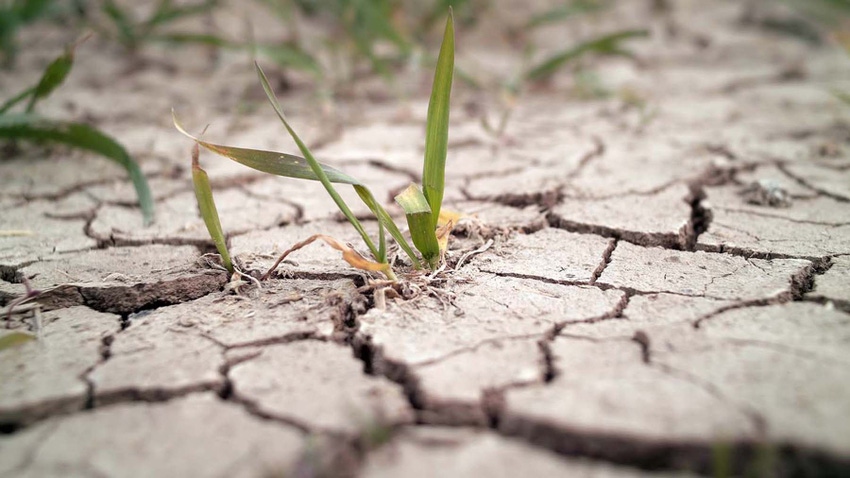
As far as I can recall, not one meteorologist earlier in the year forecast one of the driest Mays on record for the eastern Corn Belt. But that is what has developed in the past 30 days.
Remember this as crops enter the critical summer weather portion of the growth cycle. The latest forecast predicts this pattern could continue into the later part of next week (June 9) before we potentially see a change.
Unlike last week, temperatures this week are expected to exceed normal, exasperating the dry situation and putting the crop under continued stress. With trading funds carrying uncommon short fund positions this time of year, the lack of weather pattern change could lead to “a rush to the exits” resulting in a short covering rally. The trade will watch to see if the pattern change comes to fruition over the next two weeks.

The first corn crop rating of the year was released this week and reported that 69% of the crop was rated good to excellent, below the trade estimate of 71% good to excellent and 4% below year-ago levels. The five-year average for the first condition ratings is 71%. Over the last five years, initial corn ratings have been 73% in 2022, 76%, 70%, 59%, and 79% in 2018. With the current hot and dry forecast, we anticipate the good to excellent rating will fall next week, which could support the market until rain materializes in the dry portion of the country.
Factors to watch now
The grain complex came out of the three day weekend under pressure partly due to uncertainty surrounding China's economic recovery. China has not seen a post-pandemic economic bounce like many in the trade had anticipated. Instead, the country is dealing with fresh COVID-19 outbreaks that are expected to infect up to 65 million people a week, which will continue to be a drag on their economic growth.
If we are to get a rally, it is more likely that it will be a supply-driven one as demand continues to be a concern. Crude oil started the week's trade down 4% due to demand concerns. Crude oil tends to be the lead dog in the commodity complex. If it trends higher, it tends to pull the other commodities higher; if it trends lower, it tends to have a bearish effect on other commodities. The concern about Chinese demand led the July soybean futures to break critical support on Tuesday and closed below $13 for the first time since July 2022. Meal fell below $400 and is at its lowest price since October, while oil is retesting recent lows.
Even with the break in the market, we are still not competitively priced in the world market. Brazil soybeans FOB premiums for July are at -37SN vs. July FOB NOLA at +72N. This has east coast crushers importing up to 290,000 tons of Brazilian soybeans.
We would look for corn exports to continue to struggle as it appears the Brazilian corn crop is increasing in size, resulting in more competition for U.S. supplies. Safras & Mercado suggest the 22/23 crop could reach 136.998 million metric tons. AgRural just raised their estimate to 127.4 million tons. This is compared to the 130 million metric tons currently projected on the May WASDE report.
The reality is, without a significant U.S. supply disruption, ending stocks are anticipated to explode in size, leading us to believe the overall risk is to the downside in the long run, unless the weather pattern does not change as anticipated.
U.S. corn ending stocks are expected to rise 56% Year over Year, and ending stocks as a percentage of use are expected to go from 10.3% this year to 15.3% for new crop. This 15.3% stocks-to-use ratio compares to an average of 14.4% from 2015 to 2019.
With this in mind, we encourage producers to take a sell-and-defend approach to any rallies which may occur. We recommend purchasing calls against futures and cash sales if the pattern change does not materialize. Consider purchasing the weekly or short-dated calls to limit the cost of the options.
If you have questions or would like specific recommendations for your operations, don't hesitate to contact me directly at 815-665-0461 or anyone on the AgMarket.Net team at 844-4AGMRKT.
The risk of loss in trading futures and/or options is substantial and each investor and/or trader must consider whether this is a suitable investment. AgMarket.Net is the Farm Division of John Stewart and Associates (JSA) based out of St Joe, MO and all futures and options trades are cleared through ADMIS in Chicago IL. This material has been prepared by an agent of JSA or a third party and is, or is in the nature of, a solicitation. By accepting this communication, you agree that you are an experienced user of the futures markets, capable of making independent trading decisions, and agree that you are not, and will not, rely solely on this communication in making trading decisions. Past performance, whether actual or indicated by simulated historical tests of strategies, is not indicative of future results. Trading information and advice is based on information taken from 3rd party sources that are believed to be reliable. We do not guarantee that such information is accurate or complete and it should not be relied upon as such. Trading advice reflects our good faith judgment at a specific time and is subject to change without notice. There is no guarantee that the advice we give will result in profitable trades. The services provided by JSA may not be available in all jurisdictions. It is possible that the country in which you are a resident prohibits us from opening and maintaining an account for you.
The opinions of the author are not necessarily those of Farm Futures or Farm Progress.
Read more about:
WeatherAbout the Author(s)
You May Also Like






